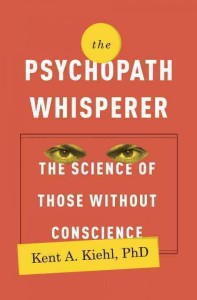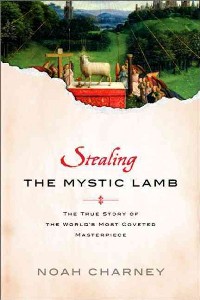 Yesterday’s book, What If?, claims in its subtitle that it will provide answers to “Absurd Hypothetical Questions.” Science is all about hypothetical questions because scientists are always asking “Why?” about all aspects of nature and life, and then asking “What would happen if I change something?” Sometimes a question may seem absurd on the surface but the answer may provide a an interesting, profound or counter-intuitive glimpse into the nature of reality. Scientist and author Kent A. Kiehl seems to have asked, “Are psychopath’s brains different from normal people’s brains?” Being a clever scientist (and apparently a man of great persuasive powers) he took fMRI machines into prisons and concluded that “Yes, psychopath’s brain structures and functions definitely differ from normal brains.”
Yesterday’s book, What If?, claims in its subtitle that it will provide answers to “Absurd Hypothetical Questions.” Science is all about hypothetical questions because scientists are always asking “Why?” about all aspects of nature and life, and then asking “What would happen if I change something?” Sometimes a question may seem absurd on the surface but the answer may provide a an interesting, profound or counter-intuitive glimpse into the nature of reality. Scientist and author Kent A. Kiehl seems to have asked, “Are psychopath’s brains different from normal people’s brains?” Being a clever scientist (and apparently a man of great persuasive powers) he took fMRI machines into prisons and concluded that “Yes, psychopath’s brain structures and functions definitely differ from normal brains.”
Kiehl has published many scientific papers, and one published a few months ago says that the abnormal brain structures associated with psychopathy can be detected in adolescence. It is not ethically clear what society can do with this information. “Psychopath” is a word used popularly to describe mentally ill people–often people the speaker doesn’t like! Before I read this book I didn’t realize that psychopathy is measured by a standardized test used by psychiatrists and psychologists with a fair degree of consistent results. Psychopaths are estimated to be less than 1% of the general population, but they may constitute up to 35% of the prison population. Obviously, not all psychopaths are criminals but a lot of criminals are psychopaths. Psychopaths can be the very bad people of popular myth and culture. Kiehl gives numerous examples of murderers and rapists who simply could not understand why their actions were bad and elicited horror and condemnation from other people (and society at large).
In the past it was very difficult to measure the internal and real-time workings of a brain. Electrical activity could give researchers an idea of what was going on but mostly functions and structures could only be measured when the brain wasn’t working, that is, after the person was dead. An fMRI (Functional Magnetic Resonance Imaging) machine can measure the blood flow in real time within a living subject, and increased blood flow means that the person is using that part of their brain. Kiehl uses this to examine how psychopath’s brains react differently to normal people’s under certain stimuli.
The Psychopath Whisperer is a great book for readers who like to explore the emerging physical and psychological reasons why people act the ways they do such as Just Babies: The Origins of Good and Evil by Paul Bloom. Fans of Oliver Sacks’ Musicophilia or Hallucinations will appreciate that Kent Kiehl also uses profiles of real people. It will be interesting if you like reading true crime books like Anne Perry and the Murder of the Century by Peter Graham. Also try it if you like fiction exploring the idea of inherited criminality, such as Defending Jacob by William Landay or The Dinner by Herman Koch.
Check the WRL catalog for The Psychopath Whisperer





 I was instantly absorbed in this fast-paced, detective-style investigation of the mysterious manuscript, the “Crown of Aleppo.” Parchment fragments of the ancient codex are still unaccounted for today, so those who want the book to end with a nice neat conclusion or happy ending should not even get started. However, those who love a good unsolved mystery and a series of unreliable accounts from multiple viewpoints, perhaps reminiscent of Iain Pears’s novel,
I was instantly absorbed in this fast-paced, detective-style investigation of the mysterious manuscript, the “Crown of Aleppo.” Parchment fragments of the ancient codex are still unaccounted for today, so those who want the book to end with a nice neat conclusion or happy ending should not even get started. However, those who love a good unsolved mystery and a series of unreliable accounts from multiple viewpoints, perhaps reminiscent of Iain Pears’s novel, 


 The Art Detective Philip Mould became a television celebrity from his role appraising works of art unearthed from dusty attics or flea markets on the popular “Antiques Roadshow,” but according to his memoir he began as an ambitious art dealer who just happened to fall in love with the game of chasing down a good find using the forensic and research expertise of his reliable staff, his vast knowledge of artists and fine art portraiture and often pure instinct along with a willingness to risk his reputation in the highly competitive art world. Sheer luck seems to have been in his favor with a number of great finds that, had he been wrong — such as in his decision to scrape away some over-painting — might have had disastrous consequences both financial and for art’s sake. He seems very fortunate to have found early success that he has been rolling with ever since, which makes for a very fascinating read about his life’s work.
The Art Detective Philip Mould became a television celebrity from his role appraising works of art unearthed from dusty attics or flea markets on the popular “Antiques Roadshow,” but according to his memoir he began as an ambitious art dealer who just happened to fall in love with the game of chasing down a good find using the forensic and research expertise of his reliable staff, his vast knowledge of artists and fine art portraiture and often pure instinct along with a willingness to risk his reputation in the highly competitive art world. Sheer luck seems to have been in his favor with a number of great finds that, had he been wrong — such as in his decision to scrape away some over-painting — might have had disastrous consequences both financial and for art’s sake. He seems very fortunate to have found early success that he has been rolling with ever since, which makes for a very fascinating read about his life’s work.









